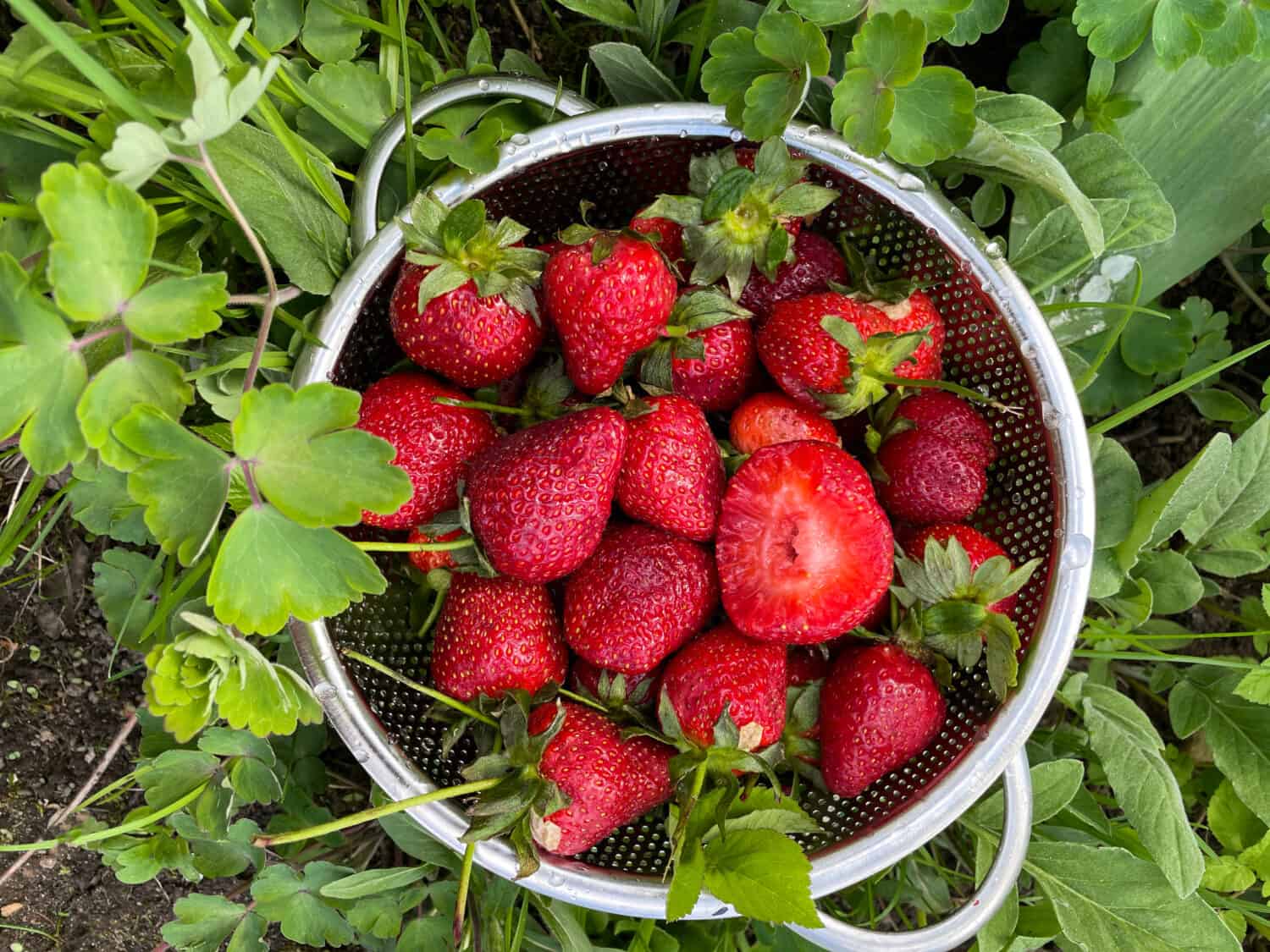There are many tools to use during cooking and baking in the kitchen, and it can be hard to keep them all straight! You have come to the right place if you constantly ask yourself the difference between a strainer and a colander. There are two main differences between the two. These differences are their uses and their materials.
This article will explore the differences between a colander and a strainer, what each is, and when exactly to use each, helping you become a pro in the kitchen!
Strainer vs. Colander: Differences and When to Use Each
Both a strainer and a colander are essential tools in the kitchen. Their functionality and uses help cooks and moms everywhere whip up dinner faster. However, the terms strainer and colander sometimes seem interchangeable when they are, in fact, pretty different.
What is A Strainer?
A strainer is a tool great in the kitchen for catching large and small food particles. It gives the cook an easier way to filter liquids and larger solid food.
A strainer has a mesh material with very small holes throughout the bowl. This makes the ability to catch solids easier while filtering the liquids through.
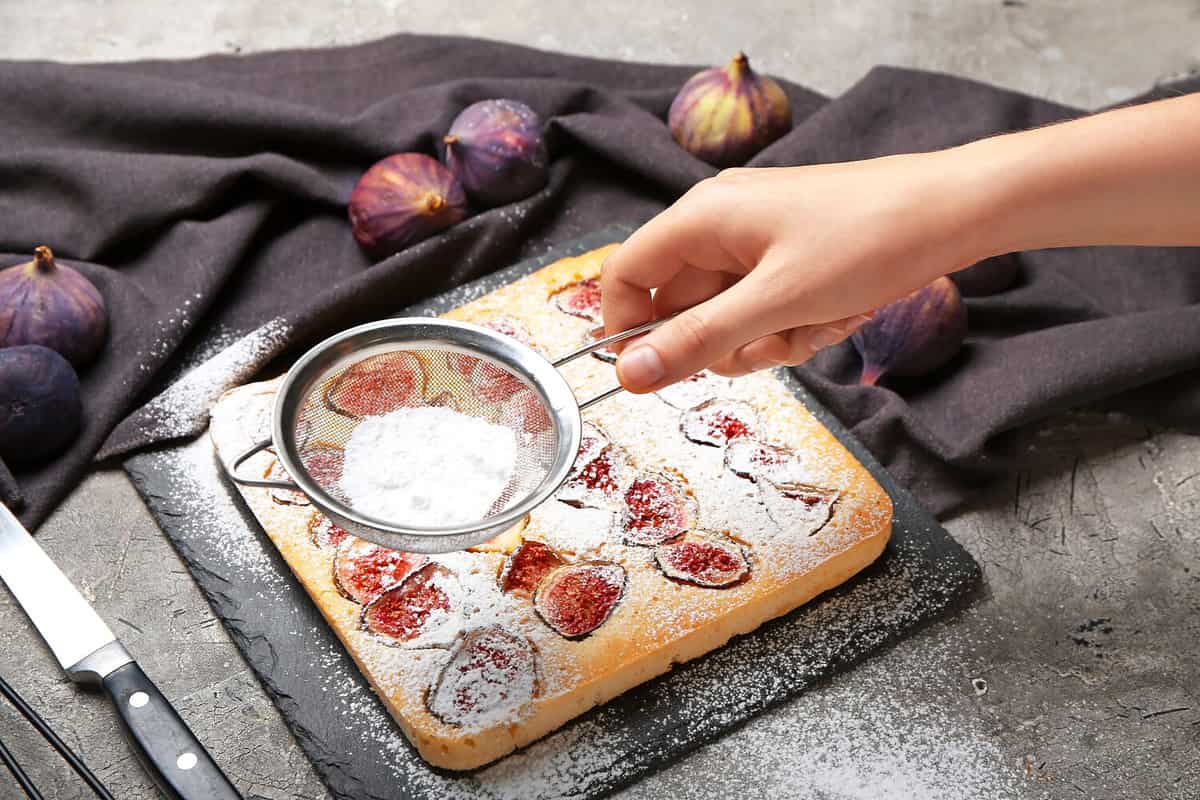
A strainer can also be great for sprinkling different food items with a substance, such as sugar powder on fig pies in the above photo.
©Pixel-Shot/Shutterstock.com
When to Use A Strainer
It is best to use a strainer when you would like to remove solids like seeds, bulbs, leaves, and herbs or rinse grains like rice or quinoa.
Unlike a colander, a strainer will hold the smaller materials, like rice, and keep them from falling through. Strainers are also excellent for thinning a liquid because the small mesh holes catch even the smallest food particles.
More uses of a strainer include:
- Straining tea leaves from the tea
- Shifting sugars and flours over food
- Draining liquids to catch lumps, and thin sauce
- Rinsing berries that are both large and small
Strainers can hold small and large food items while rinsing, straining, or mixing. The small mesh holes make all of this possible.
Types of Strainers
Like most materials in the kitchen, there are many strainers to choose from. There is the typical strainer basket that holds pasta and vegetables. A strainer basket is excellent for quickly blanching these foods in hot, boiling water.
Another type of strainer is the chinois strainer. Sauces and purees can pour through this strainer, catching lumps and giving the cook a smoother sauce.
A china cap strainer has a mesh basket that removes seeds.
Lastly, the cocktail strainer is small and can be great for straining ice and more.
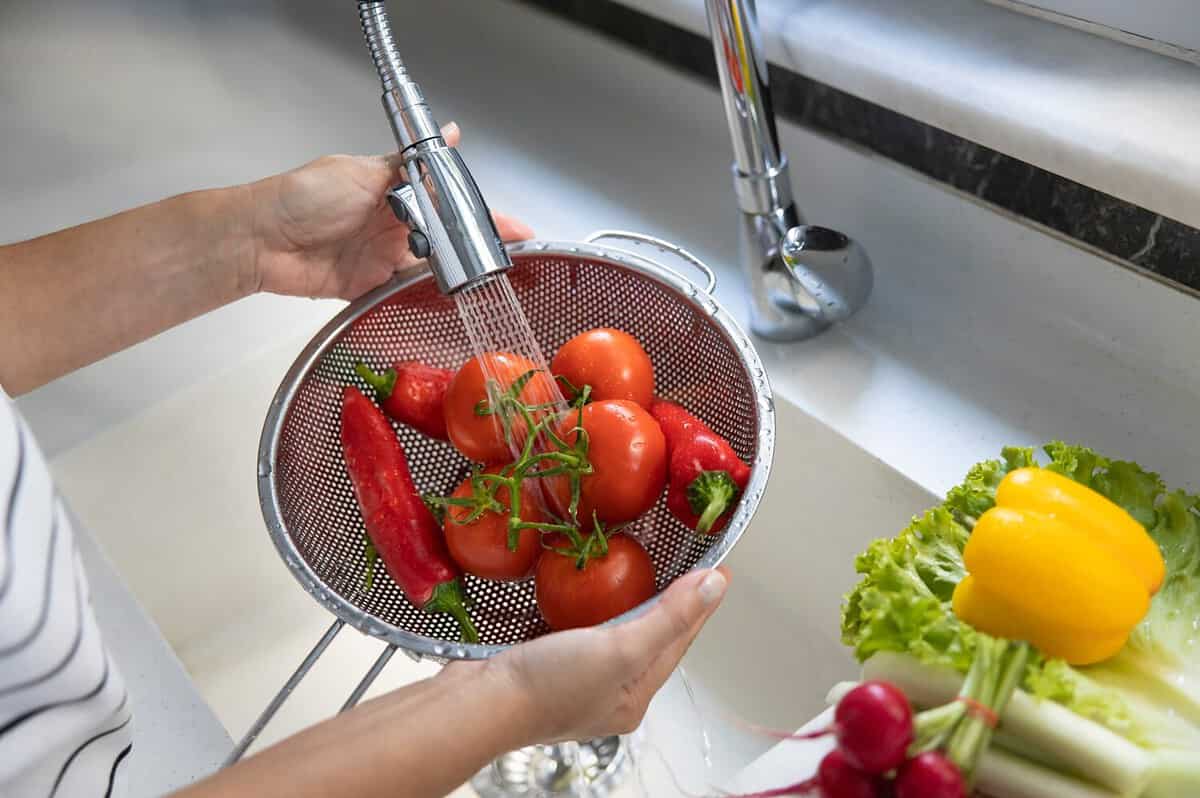
Strainers are typically smaller than a colander, and one can easily transfer it from one spot in your kitchen to the next. The tiny holes in the mesh material make a strainer excellent for catching small food particles and draining liquid.
©Ahmet Misirligul/Shutterstock.com
What is A Colander?
Often, a Colander is called a strainer. However, they are pretty different. A colander can be plastic, aluminum, or even steel. While the concept resembles a strainer, a colander is most popular for draining liquids and rinsing foods.
The perforated holes of a colander can be large or small. Also, the colander typically has two handles for holding and is larger than a strainer.
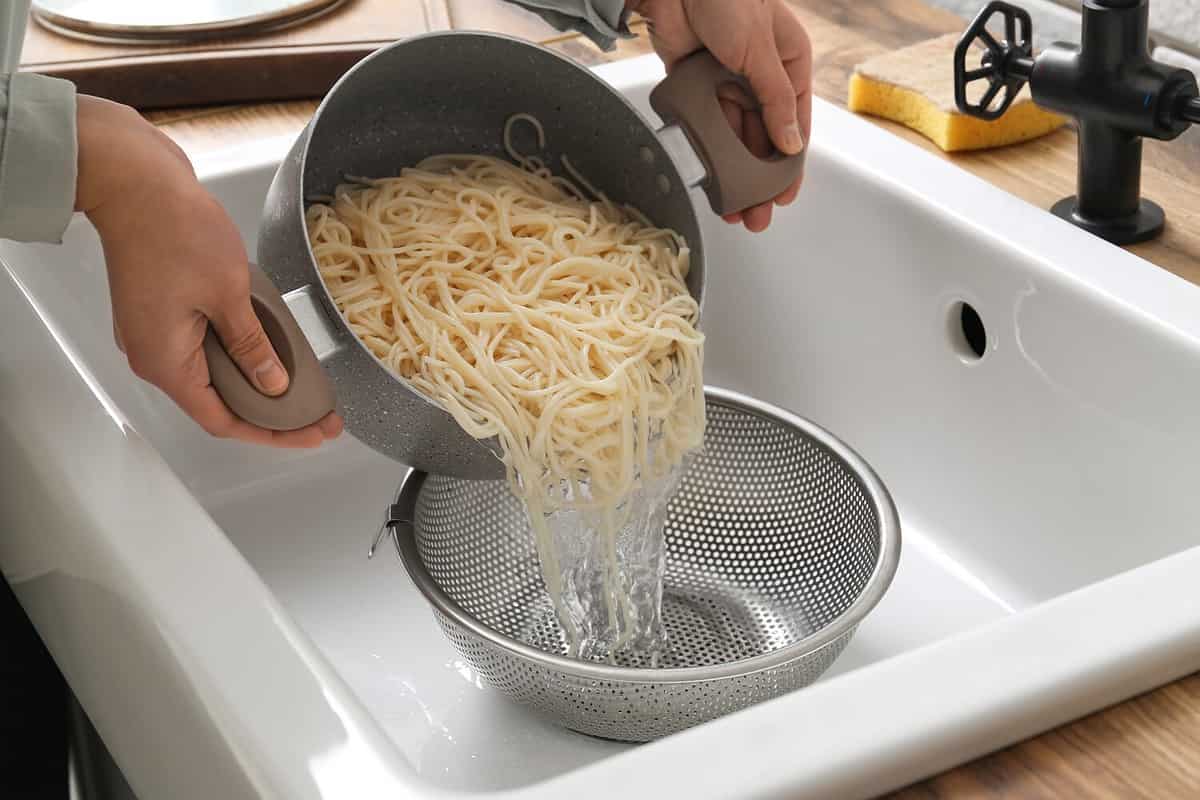
A colander is a common household item in the kitchen. Many use their colanders daily to drain liquids after boiling food, like pasta.
©Pixel-Shot/Shutterstock.com
When to Use a Colander
The purpose of a colander is to drain liquids from foods. It can also be fantastic for rinsing foods before and after cooking. Colanders are great when you want to drain your pasta, rinse large items like peppers, or even small items like berries.
Colanders are also wonderful for draining canned items like beans and tomatoes.
Different Types of Colanders
Like strainers, there are many different types of colanders. They come in large sizes for draining pasta and small sizes for rinsing small fruit or other food items. If you are still determining which colander suits you, take a look below at a few types.
If you are looking for a colander with large holes that can drain a large amount of liquid, go with a Chinese colander. Also, a Chinese colander does not have handles, making it easier to stack.
If you prefer to hold your colander, choose a smaller one with two handles, one on each side. The handles allow ease when transferring the colander from one side of the kitchen to the other.
Smaller fruit colanders are perfect for rinsing a variety of food before consuming, and compactable colanders can stretch across your sink, making pouring and draining liquids into the sink easier. Having multiple colanders in your kitchen can make cooking, rinsing, and draining with ease a possibility.
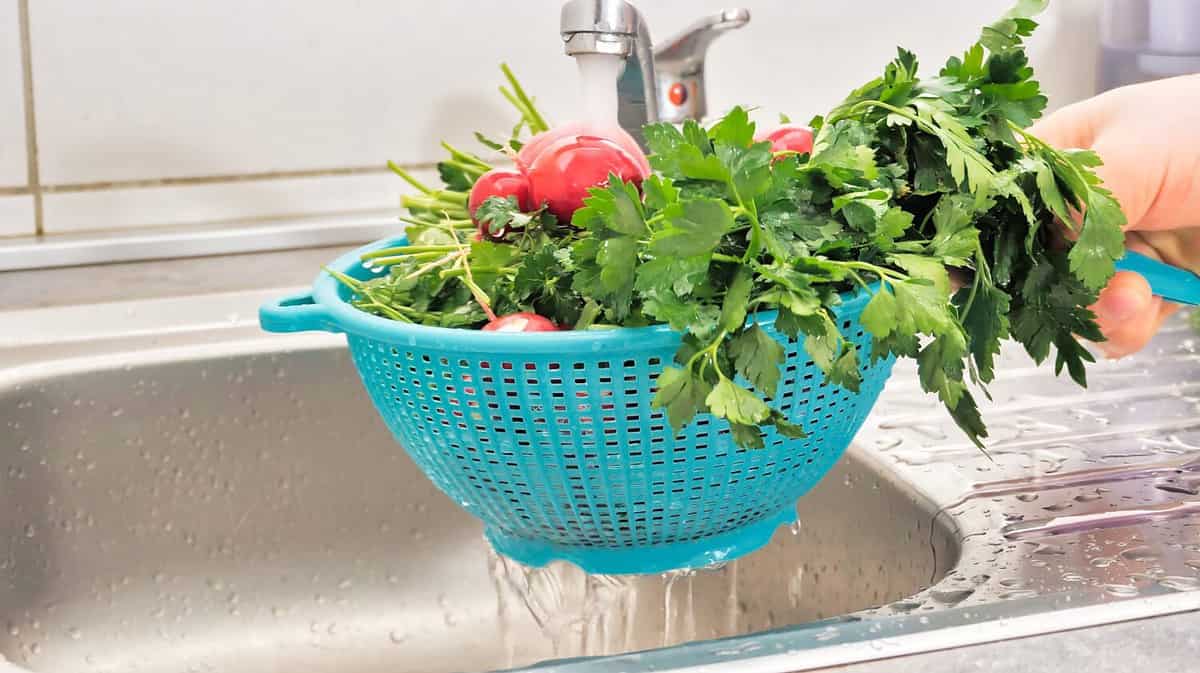
Colanders are usually larger than a strainer, and many have two handles. Colanders can also come in a variety of materials, including plastic, metal, rubber, and more.
©Petro Artem/Shutterstock.com
Can You Substitute a Strainer for a Colander?
While their uses are very similar, substituting a strainer for a colander or vice versa is possible. However, their original purposes vary greatly. A strainer is specifically for catching small food items that may be missed in a colander, like seeds and clumps. A colander, on the other hand, is for draining liquids or rinsing food.
Using them interchangeably may mean your results vary from the original purpose. For example, large clumps and seeds may be missed using a colander instead of a strainer. On the other hand, a strainer may keep in more liquid than you want if you replace it with a colander. Therefore, having both a strainer and a colander on hand is convenient while cooking in your kitchen.
In Conclusion
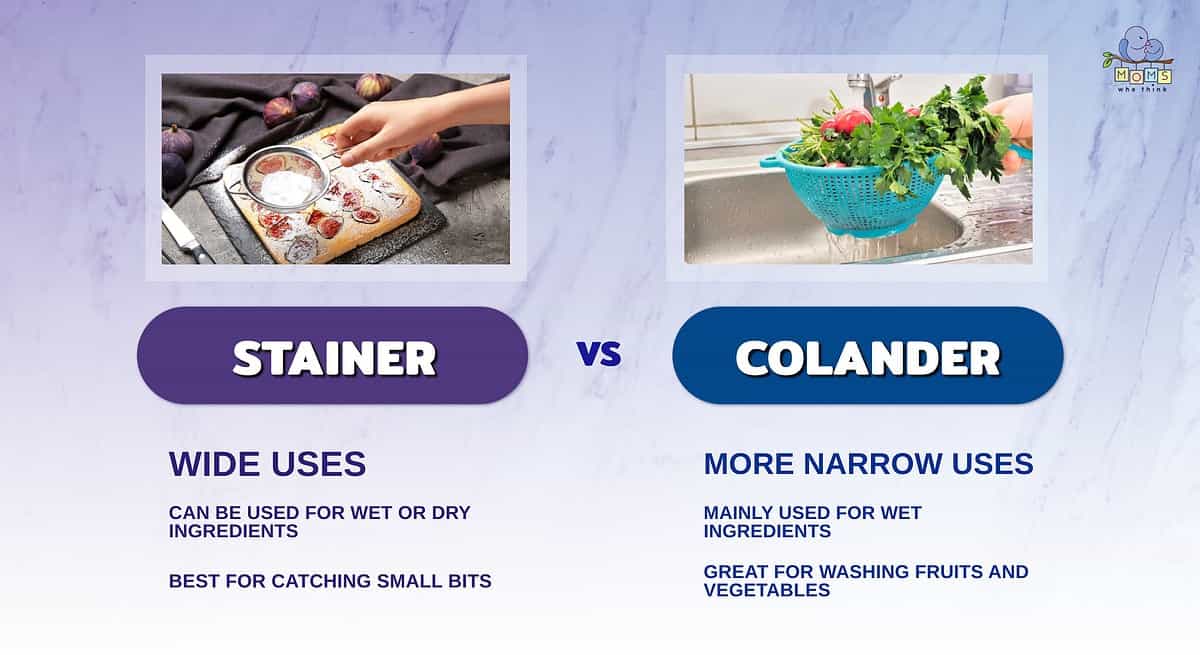
Both kitchen tools are sometimes used interchangeably regarding a strainer and a colander. However, the truth is their differences and purposes set them apart from one another. A strainer is a mesh material with small holes that catch smaller food materials like seeds, leaves, and more. It usually has one handle and is very portable.
On the other hand, a colander can come in many different materials, including plastic and stainless steel. Whether you choose a small or a large colander, the purpose remains the same. The large perforated holes make it easy for liquids to drain out of the colander and the large items, like vegetables and pasta, to stay inside. Both of these tools are vital items to have in your kitchen and make cooking many different dishes easier for moms and cooks everywhere.
Comparison Posts
- Wood Pizza Peel vs. Metal: What's the Difference?
- Salad Fork vs Dinner Fork: Difference in Size and Which to Use First
- Cast Iron vs Pizza Stone: Main Differences, Pros, and Cons
- Roasting vs. Baking: Is There Really A Difference?
The image featured at the top of this post is ©Nadezhda Murinets/Shutterstock.com
